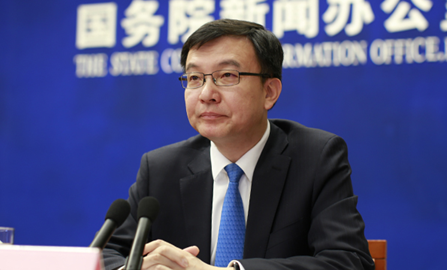
Zhou Bo introduces the initiate of national science and technology innovation center on April 1. [Photo/ scio.gov.cn]
Shanghai’s deputy mayor, Zhou Bo, spoke about the latest developments of a science and technology innovation center on April 1 at a routine briefing held by State Council Information Office.
According to Zhou, construction work on the national science center started when the city’s plan to build Shanghai into a global science and technology innovation center was approved on March 30.
Zhou said that Shanghai will systematically carry forward comprehensive innovation reform within three years and attach more attention on science and technology financial innovation, talents attraction, science and technology achievements transfer and intellectual property.
The basic structure of the science center is scheduled for completion by 2020, while authorities aim to have the center fulfill its core functions by 2030, with the aim of taking a leading role in the world.
The main tasks of the project include:
1- to establish comprehensive national science center;
2- to build generic technology’s research and development as well as a transfer platform;
3- to facilitate the construction of important strategic projects and foundation engineering;
4- to push forward the construction of the Zhangjiang National Innovation Demonstration Zone;
Reform measures are reflected in six aspects:
1- to establish a government administration system to meet innovation rules;
2- to build a market-oriented science and technology achievements transfer system;
3- to improve the innovation-motivated revenue allotment system;
4- to complete enterprises’ innovation investment system;
5- to establish a flexible innovation-oriented talents development system;
6- to build an integrative new cooperation mechanism on cross-border investment.
Zhou introduced 10 experimental reform measures. They are:
1- to research and explore preferential policies to motivate innovation and startups;
2- to explore and develop new financial service modes, such as investment and loan integration systems;
3- to reform the marketing system of the Shanghai equity exchange;
4- to enlarge the identification scope of high-tech enterprises;
5- to improve equity incentive mechanisms;
6- to develop a research and development new-style industrial technology organization;
7- to develop convenient service pilots, such as an overseas talents permanent residence convenience service;
8- to simplify foreign investment management;
9- to improve the registering and production management systems for pharmaceuticals;
10- to establish a scientific operation and management system for a national science center
